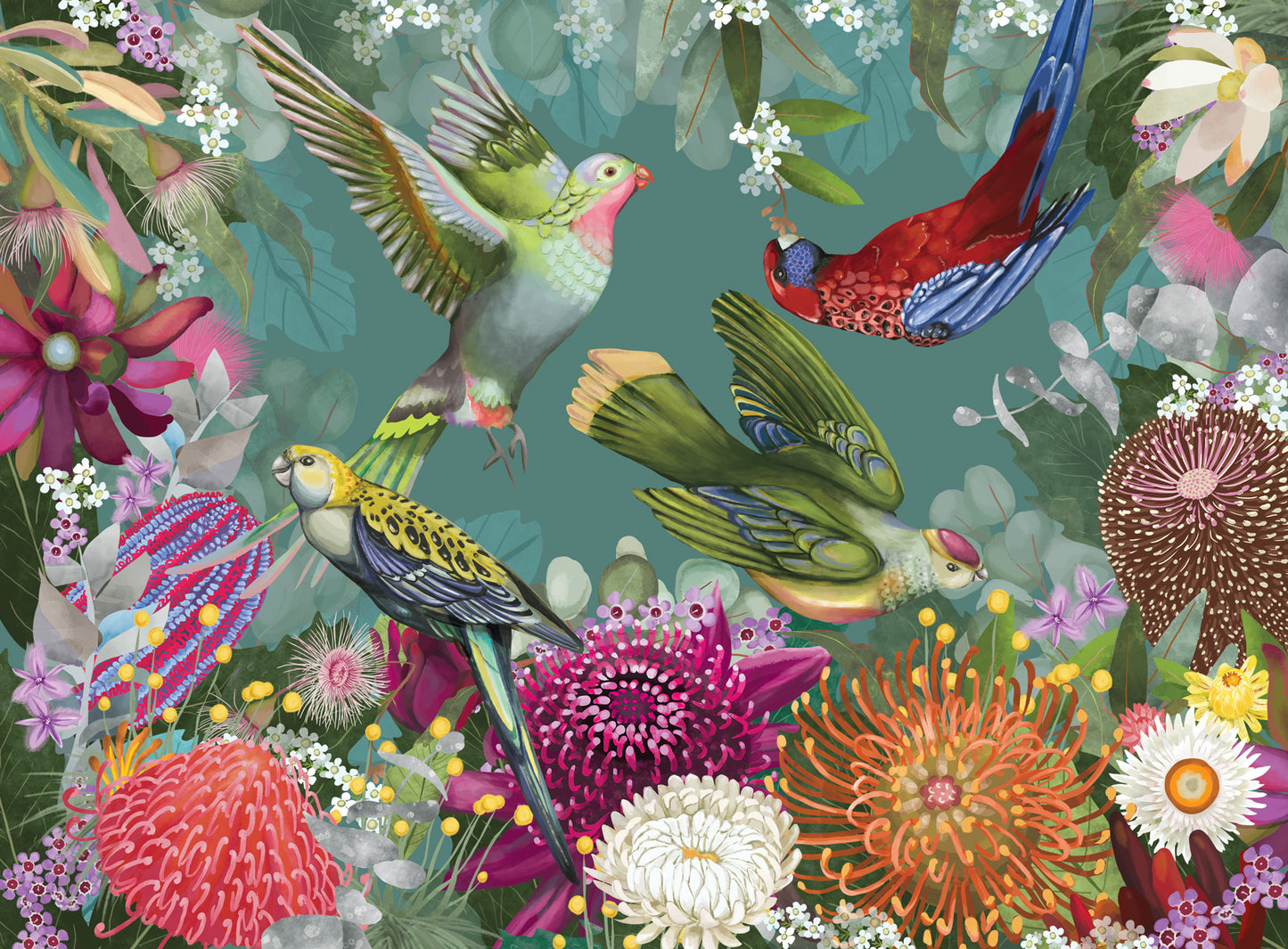When you think Australian birds, you
will probably think of a screeching sulphur crest cockatoo, a laughing kookaburra, or even the mischievous swooping magpie. But did you know, Australia is home to about
830 species of birds – even more if you include neighbouring islands – and nearly one in 10 of the world’s 10,000 or so living bird species. About 45% of these are endemics, found nowhere else!
Three groups of birds found widely worldwide – parrots, pigeons and songbirds, all evolved from Australia, which explains why they are so diverse and abundant here. For example, New South Wales alone has almost as many parrots as the continents of Africa and Asia combined!
Another contributing factor to our diverse bird life is the unique nature of Australia’s eucalypt and paperbark forests. Our beautiful Gum blossoms, provide food for large numbers of nectar-feeding honeyeaters which can be found in great abundance across the country.
So for our latest bird themed collection, Bush Blooms, we wanted to branch out and feature some of these special feathered friends and shine a light on our incredible bird diversity.
Let's meet the team!
Princess Parrot
Polytelis alexandrae
The Princess Parrot is an iconic desert species which occurs across Western Australia, the Northern Territory and South Australia. The Princess Parrot is highly nomadic and experiences population fluctuations, likely in response to changes in environmental conditions in its arid habitat.
Rose Crowned Fruit Dove
Ptilinopus regina
Sometimes Rose-crowned Fruit-Doves congregate in large groups in rainforest trees bearing abundant fruit, but they are usually seen singly or in twos. Sometimes they associate with other species of fruit-eating species of birds. They usually forage in the canopy of rainforest trees, clambering about among the leaves of the outer branches to pluck ripe fruit, sometimes hanging upside down to reach it. They prefer to eat black-purple fruits. Despite their bright plumage, when foraging they are often surprisingly difficult to see among the foliage.
Crimson Rosella
Platycercus elegans
The Crimson Rosella is relatively easy to see as it forages on the ground or among the leaves of eucalypts, with its spectacular combination of deep-crimson, royal-blue and black plumage. However, not all Crimson Rosellas look the same. Along the Murray River, Crimson Rosellas aren’t crimson at all — they are yellow, black and blue, with the yellow feathering replacing the crimson plumage. In southern South Australia they differ again, being roughly intermediate between crimson and yellow, with varying amounts of red and yellow in their plumage.
Pale-Headed Rosella
Platycercus adscitus
The Pale-headed Rosella is widespread throughout most of Queensland (except the dry western regions), where it occurs in a range of open forests and woodlands, as well as in parks and gardens, and its range also extends into northern New South Wales. In south-eastern Queensland, where the species’ range overlaps with that of the Eastern Rosella, the two species are often seen together, foraging for seeds on the ground or in trees. The two species, which are closely related, also occasionally breed with one another, producing hybrid birds.


















